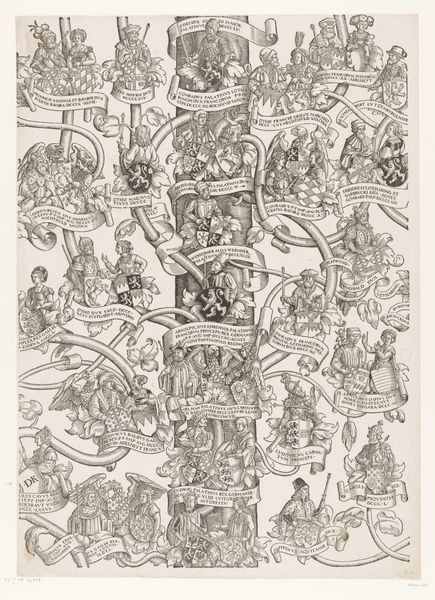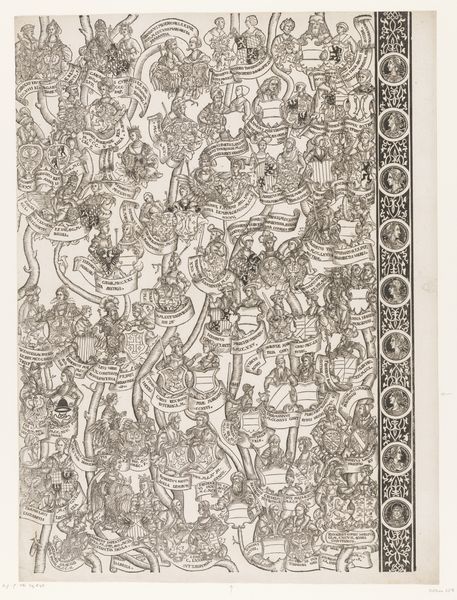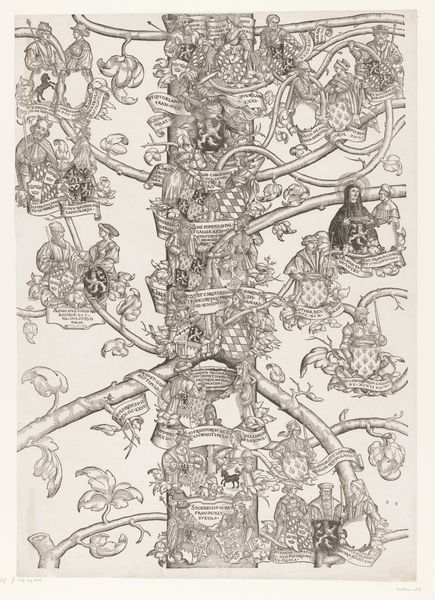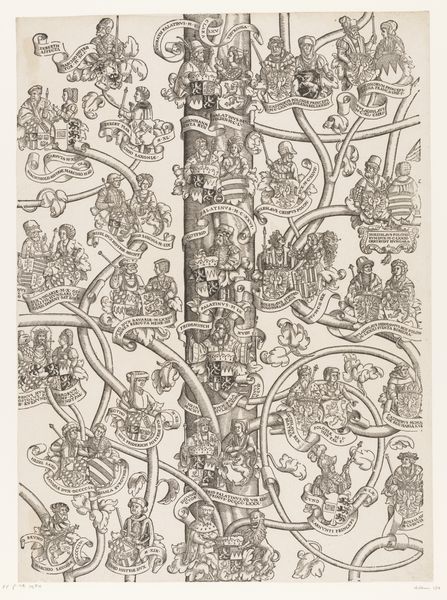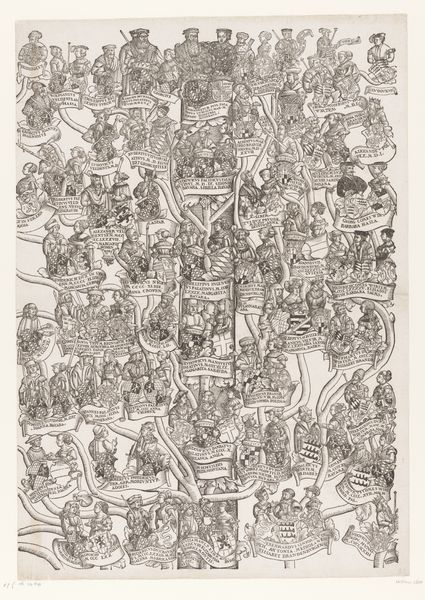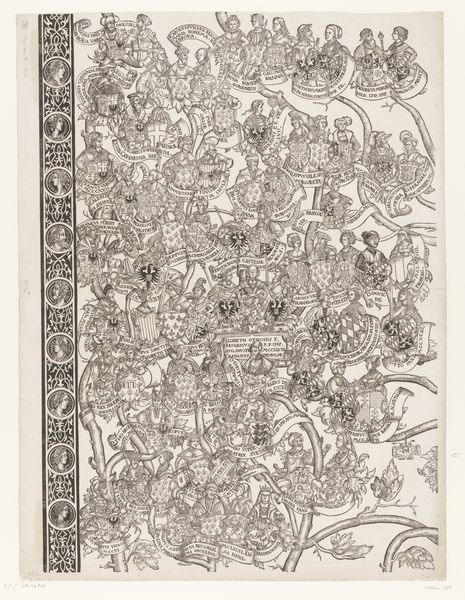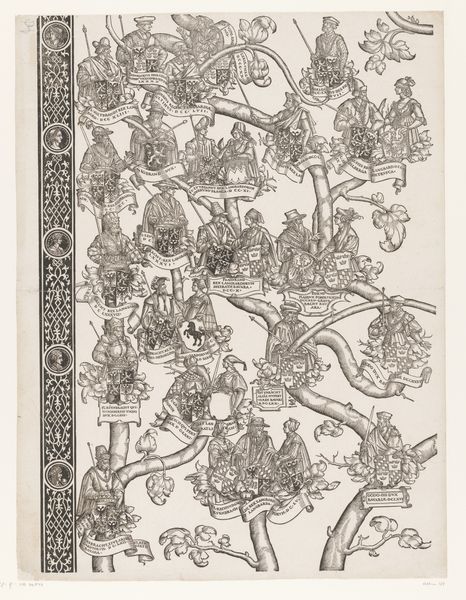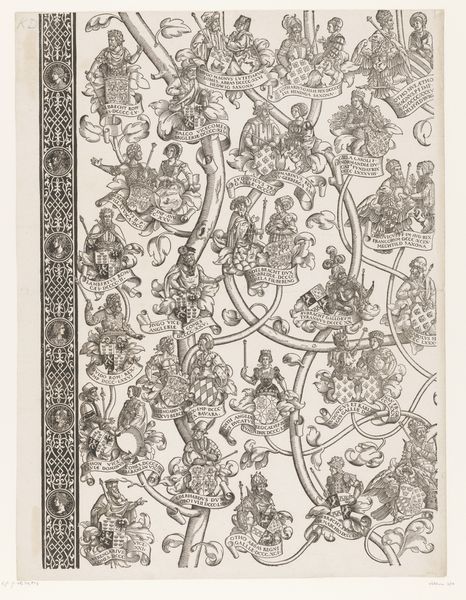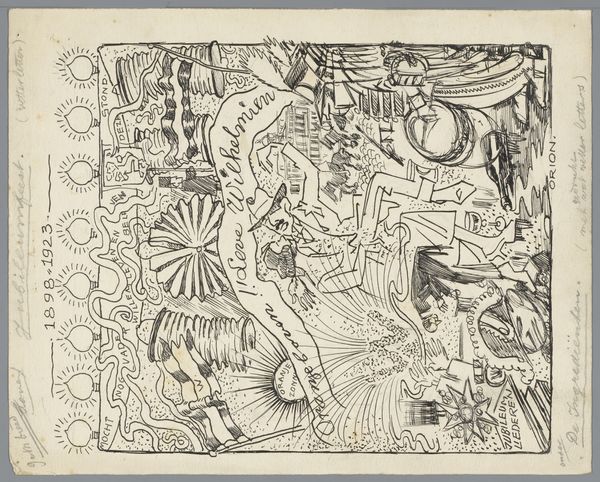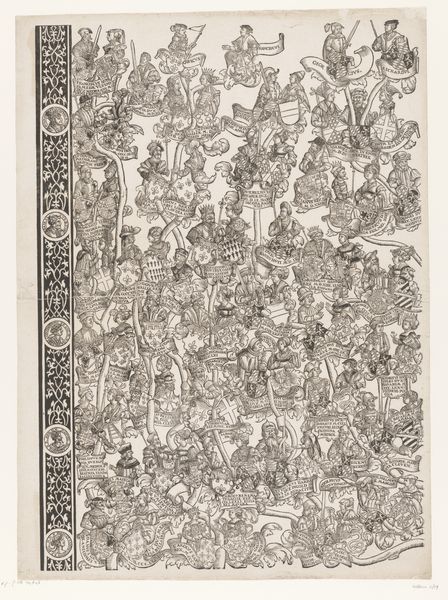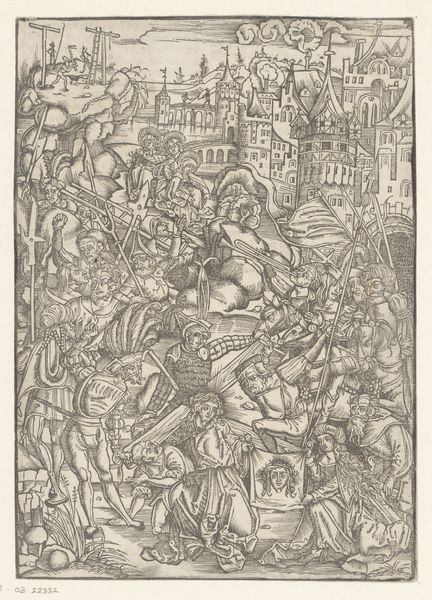
Stamboom van Frederik en Ottheinrich van Palts-Neuburg (plaat 17) 1535 - 1594
0:00
0:00
drawing, print, ink, engraving
#
portrait
#
drawing
#
medieval
#
pen drawing
# print
#
pen illustration
#
pen sketch
#
ink line art
#
ink
#
geometric
#
line
#
history-painting
#
engraving
Dimensions: height 614 mm, width 440 mm
Copyright: Rijks Museum: Open Domain
Editor: This fascinating genealogical chart, "Stamboom van Frederik en Ottheinrich van Palts-Neuburg", was created by Jakob Clauser between 1535 and 1594. It's a drawing rendered in ink, currently held at the Rijksmuseum. The sheer density of linework is striking! What stylistic choices jump out at you? Curator: The density you mention is precisely where we must begin. Consider the image not as mere representation, but as a carefully constructed visual field. Clauser uses line – and the *absence* of it – to articulate a complex hierarchy. Observe how the heavier lines define the central 'trunk', suggesting lineage, while thinner, more delicate lines delineate the individual portraits. It's a sophisticated visual coding system. Editor: So the line weight isn't just aesthetic, it's communicating importance and connection? Curator: Precisely. Further, consider the use of geometric forms, particularly in the heraldic shields. Each shape, each division within those shields, carries symbolic weight, a codified language of status and allegiance. Note the distribution of light and dark – does it strike you as even, or is there a deliberate emphasis in certain areas? Editor: It seems more concentrated around the center, drawing my eye down the family line. Almost like following the roots of a tree downward. Curator: A pertinent observation. Consider then how Clauser uses this focused contrast to visually narrate power – directing the gaze, dictating the viewer's reading of the image. Are we passively observing, or are we being actively guided through a constructed narrative? Editor: That's really interesting. I was so caught up in the detail, I missed the way the composition itself tells a story. It's a family tree, but it's also a statement. Curator: Precisely! Close formal analysis reveals the artist's intention and unveils power dynamics inscribed within the work itself.
Comments
No comments
Be the first to comment and join the conversation on the ultimate creative platform.
